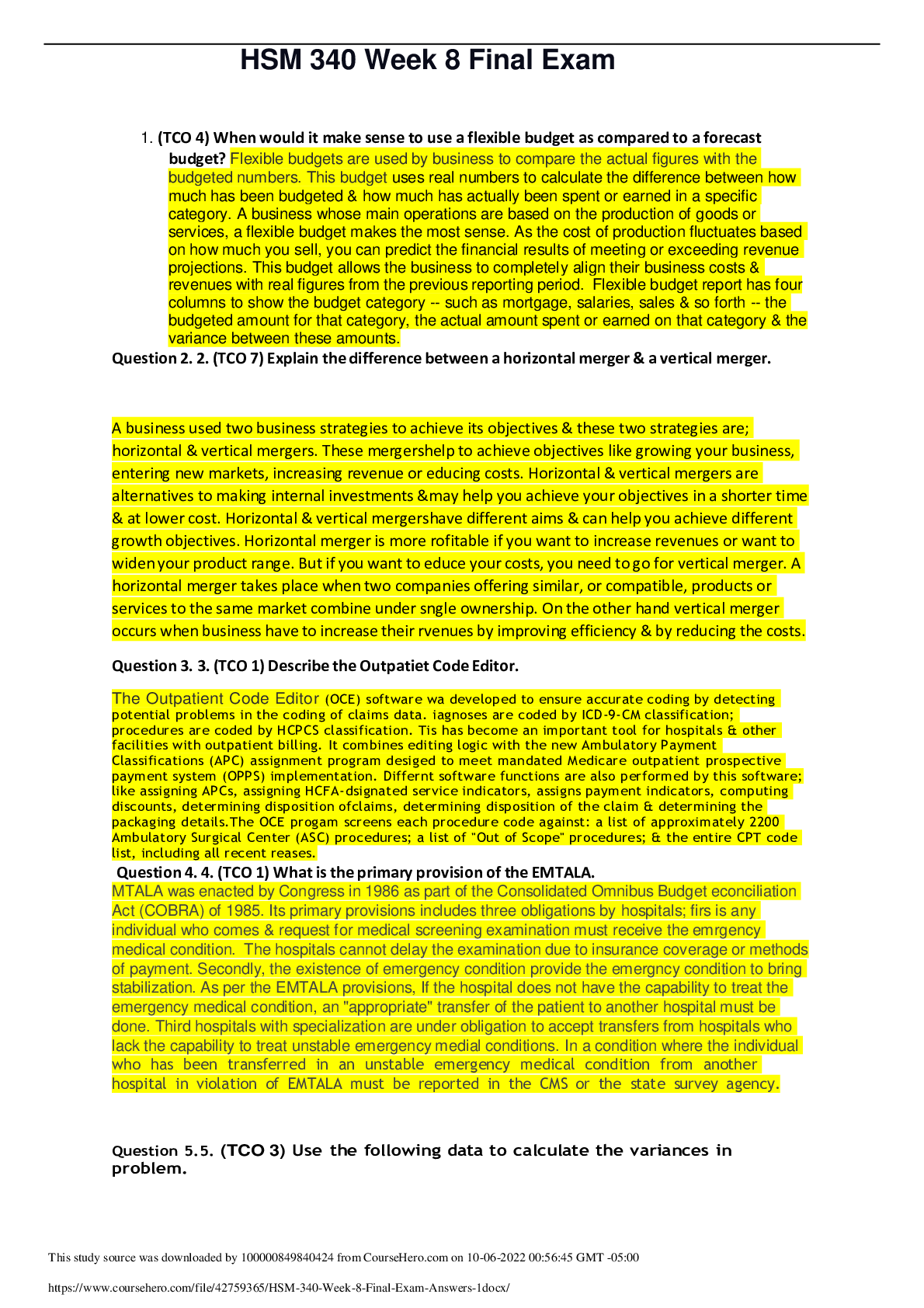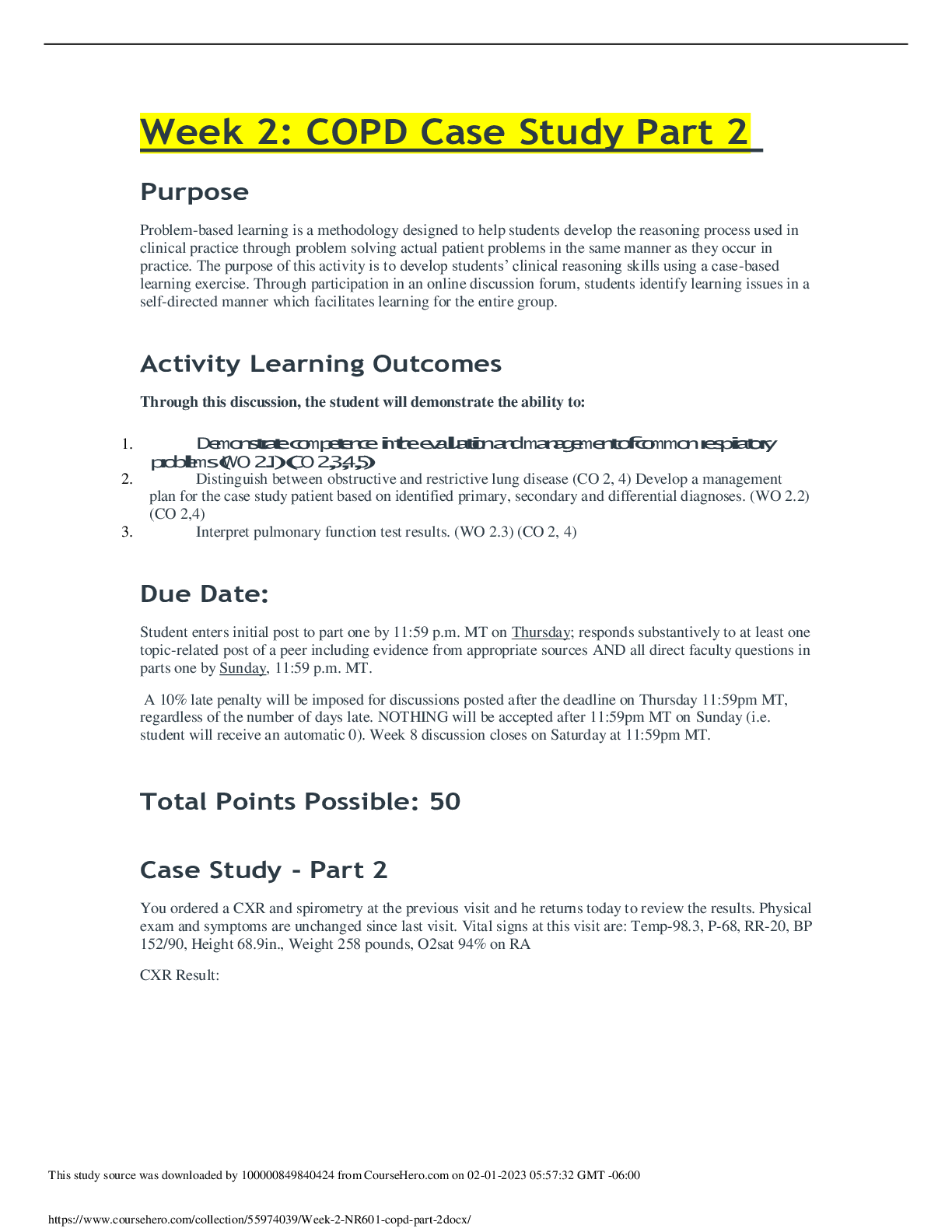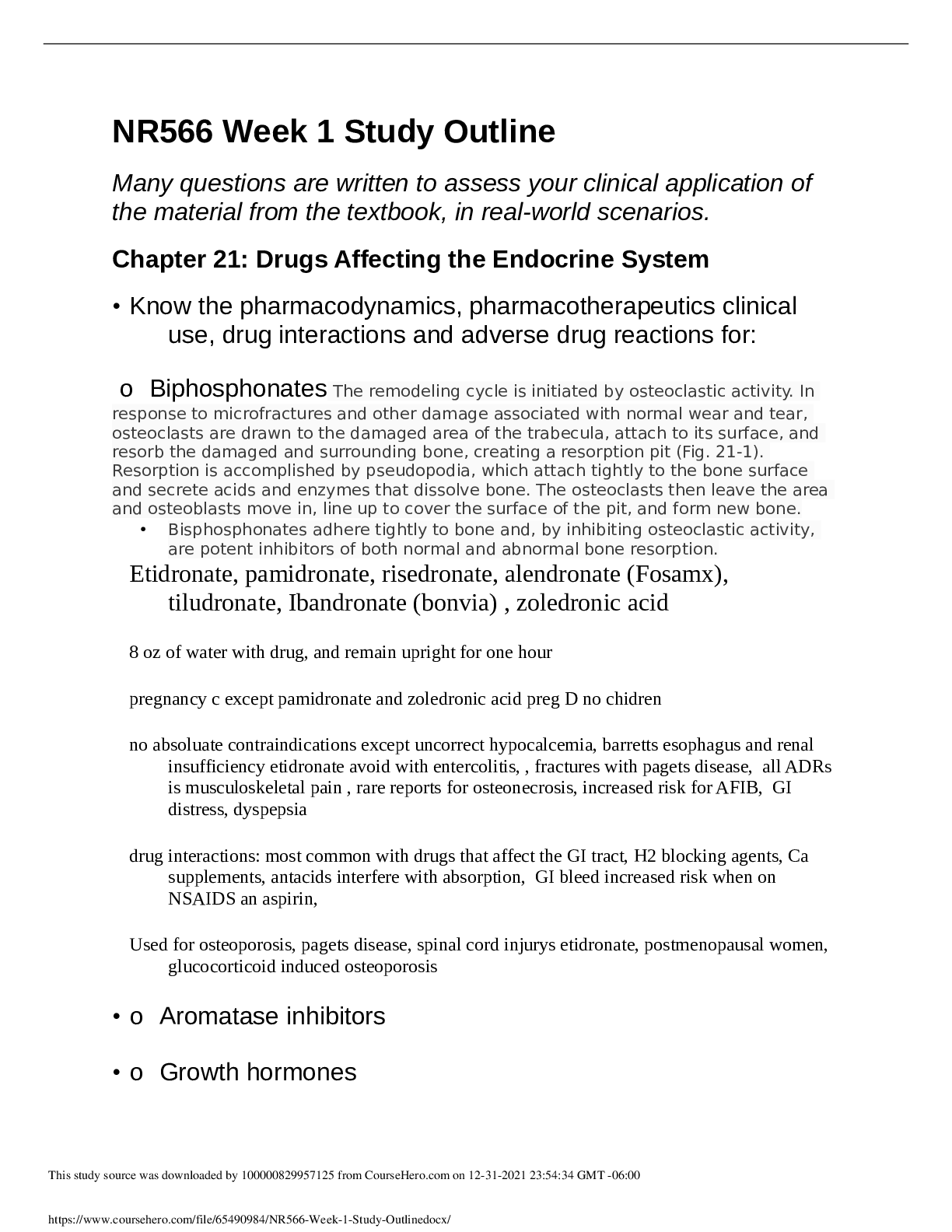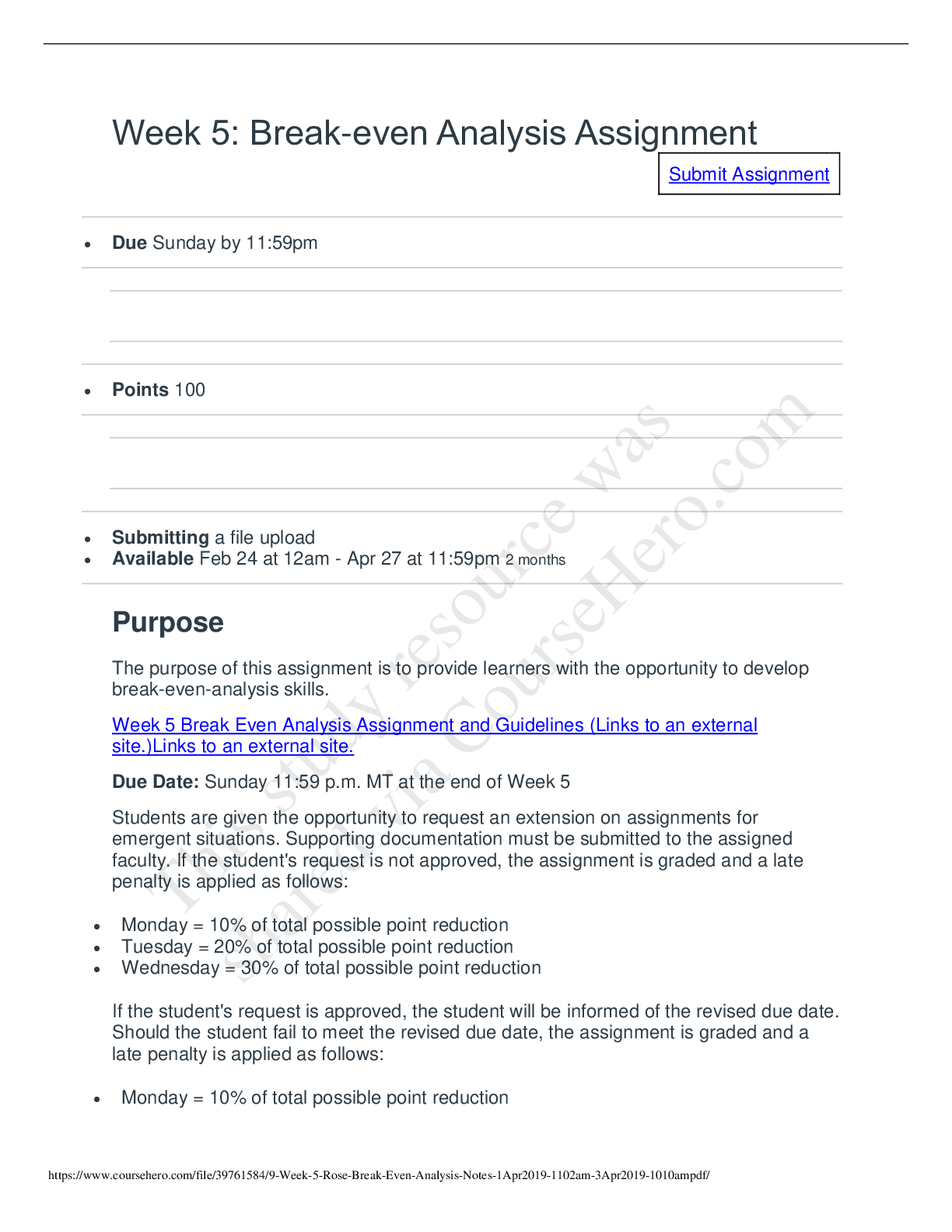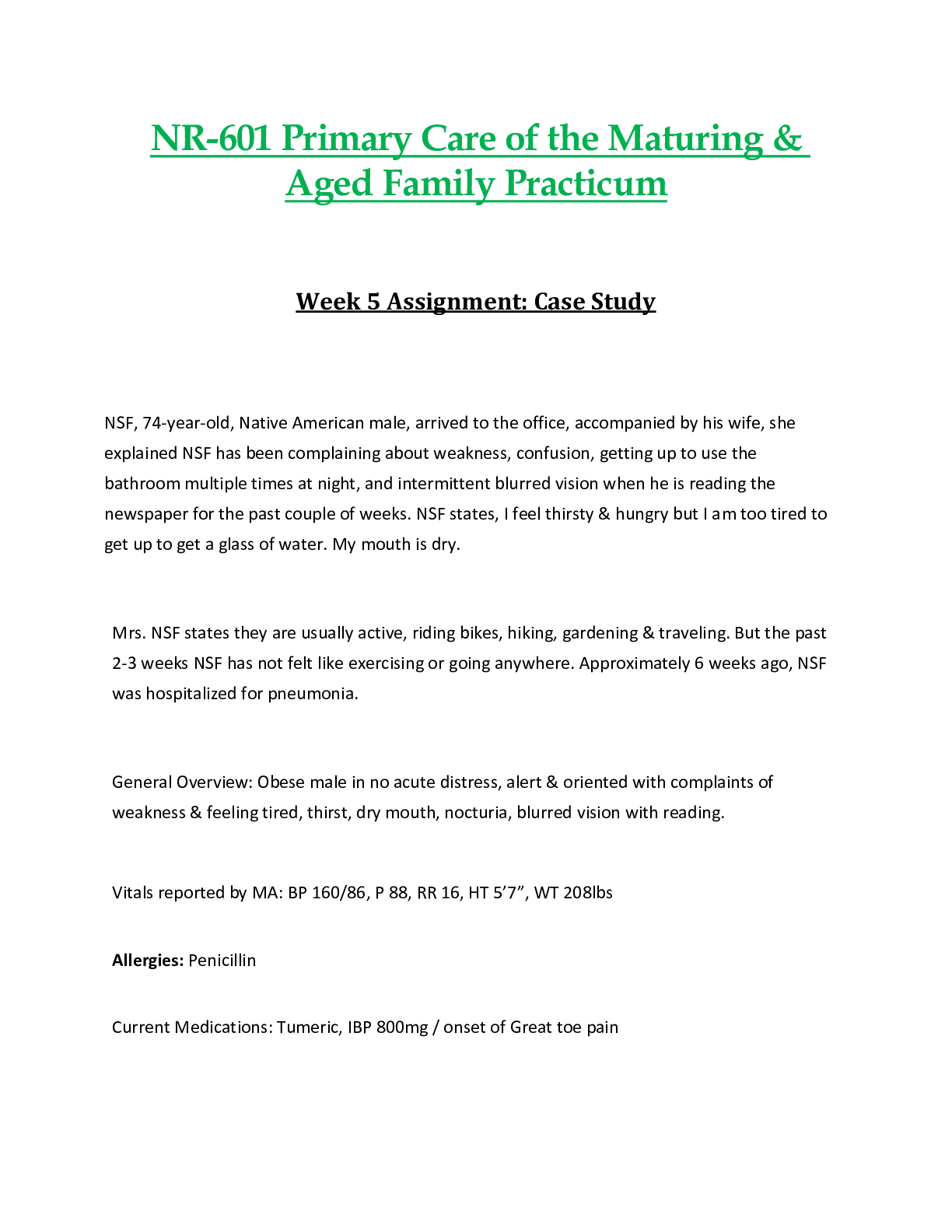Health Care > CASE STUDY > HSM 340 Week 5 Assignment: Capital Budgeting Process (graded) (All)
HSM 340 Week 5 Assignment: Capital Budgeting Process (graded)
Document Content and Description Below
Capital Budgeting Process DeVry University Health Services Finance HSM340 Week 5 Assignment A capital budget can be defined as an estimate of available resources that an organization has that w... ill be used within a year for new expenditures. Compared to capital project analysis, capital budgeting is sometimes considered to be less comprehensive and shorter in terms (Cleverley, W. O., Cleverley, J. O., Song, P. H, 2011). Just as many of us have personal budgets, organizations also must do the same thing in order to allocate resources to the right places and departments. Capital budgeting is vital for an organization to make well informed decisions and so that stakeholders can take on projects that are valuable and profitable for their organization. There are steps that need to be followed when working on a capital budget that entail the acceptance or denial of any investment projects. The growth of the organization relies on these initiatives so that they can determine the rate of return on an investment. One of the most important reasons for doing a capital budget is because it allows the organization to figure out who is accountable and allows them to measure how effective their investment will be (Gad, 2012). When an organization decides to issue bonds they must undergo a process that involves six steps. These steps are: the healthcare borrower must update the capital plan and measure their debts so that they can attempt to get their house in order. The second step is when the healthcare borrower selects the parties that will be involved in the bond issuance. The third step is to evaluate the healthcare borrower by a credit rating agency. Once they are rated the fourth step is to rate the bond by the credit rating agency. The fifth step is when the borrowers accepts and enters the loan agreement with the governmental authority, the issuer of the bonds. Lastly the sixth and final step is when the underwriters sell the bonds to bondholders at the public offering price, and the trustee provides the healthcare provider with the net proceeds (Cleverley, W. O., Cleverley, J. O., Song, P. H, 2015). The primary purpose of leasing is so that the organization is protected from owning equipment that would end up depreciating in value and the interest that accrues would not be worth paying the monies for such equipment. Leasing saves that organization from having to pay some negative equity. In addition, leasing allows for lower interest rates versus loans from a bank where interest rates tend to be higher. The two major types of leases are Operational and Capital leases; where an operating lease is when a manufacturer provides the organization the equipment, maintenance and financing; in addition the organization is not liable to finance the whole value of the equipment, in addition this lease is usually for a short period of time and can also be cancelled (Cleverley, W. O., Cleverley, J. O., Song, P. H, 2015). At the end of the lease term, the lessee would then return the property to the lessor. In a capital lease the lessee will take some of the risks of ownership along with some of its benefits. Capital lease can be taken as both an asset and liability on an organization’s balance sheet. The organization would then be able to claim the depreciation of assets each year and deduct interest; for the most part a capital lease considers expenses much sooner than operating leases. The main difference between long-term financing and short term debt is the length in time of the loan and the obligation that the borrower has to pay the loan in a particular time frame. Short-term loans are loans that are generally up to a year where long term financing is longer than a year. Short-term debt are reflected on a balance sheet as a current liability and is due within that year. Long-term financing can also be called fixed liabilities and can include company bonds when a company wants to acquire capital quickly. The primary sources of equity financing for not-for-profit healthcare organizations is mainly from tax-exempt bonds in order to upgrade their facility and acquire new technologies. Other sources include funds that are generated from charitable contributions, philanthropy, grants from the government, and selling of buildings (Cleverley, W. O., Cleverley, J. O., Song, P. H, 2015). The capital decision-making process can be generalized into four stages starting with the generation of project information; in this stage information is gathered so that it can analyzed and evaluated at a later time. This step is vital because the information found during this stage will be used to make decisions later on. Information should include available alternatives, available resources, cost data, benefit data, prior performance, and risk projection. The second stage would be evaluation of projects; where the primary focus is solvency and cost. The third step consists of decisions about which projects to fund; where decision makers create a list of projects to be funded and each project should cost the least but yield desired output. Lastly project implementation and reporting is the final stage; capital expenditures are highlighted during this stage for differences in planned versus the actual performance (Cleverley, W. O., Cleverley, J. O., Song, P. H, 2015). The three discounted cash flow methods are net present value (NPV), profitability index, and equivalent annual cost; net present value applies to capital financing alternatives, profitability index applies to capital expenditures with financial benefits, and equivalent annual costs applies to capital expenditures with nonfinancial benefits. Net present value focuses on money and the goal of management is to minimize costs of financing. When calculating NPV, incremental cash flows must be considered and nonincremental cost like sunk cost should also be included. The profitability index formula equals to NPV divided by investment costs and measures when the benefits of projects are most beneficial financially. Finally, equivalent annual cost is used to select capital projects when alternatives are available. Equivalent annual formula can be calculated by the present value of operating costs plus present value of investment costs divided by present value of annuity (Cleverley, W. O., Cleverley, J. O., Song, P. H, 2015). It is clear that the capital budgeting process is one that requires much planning and can get very complicated in between the process because it requires the attention of many decision makers. Although decisions in the healthcare industry are not purely financial however it remains as a main factor in making vital decisions. REFERENCE Cleverley, W. O., Cleverley, J. O., Song, P. H. Essentials of Health Care Finance, 7th Edition. [VitalSource Bookshelf Online]. Retrieved from https://devry.vitalsource.com/#/books/9781449621988/ Gad, S. (2012, November 15). Capital Budgeting: The Importance Of Capital Budgeting | Investopedia. Retrieved December 4, 2015, from http://www.investopedia.com/university/capital-budgeting/importance.asp Short-Term Debt Definition | Investopedia. (2006, June 19). Retrieved December 4, 2015, from http://www.investopedia.com/terms/s/shorttermdebt.asp [Show More]
Last updated: 2 years ago
Preview 1 out of 6 pages
.png)
Buy this document to get the full access instantly
Instant Download Access after purchase
Buy NowInstant download
We Accept:

Reviews( 0 )
$12.50
Can't find what you want? Try our AI powered Search
Document information
Connected school, study & course
About the document
Uploaded On
Oct 06, 2022
Number of pages
6
Written in
Additional information
This document has been written for:
Uploaded
Oct 06, 2022
Downloads
0
Views
84
